

A smaller piece of embroidery sewn or attached to another material. An appliqué is usually one piece applied for the purpose of decoration. The term is borrowed from French and, in this context, means ‘applied’. Appliqué is a surface pattern that is used to decorate an aspect of a garment or product.
Two straight stitches are connected in the middle to form a ‘V’ shape. This stitch can be used as a decorative design if a series of arrowhead stitches are sewn.
Soft String or felt can be used to create a raised surface for embroidery. Used in Goldwork to lift the metallic threads off the surface of the material. The raised area is referred to as Bump
A longer version of a running stitch, used for keeping fabrics together temporarily and able to be removed easily.
The Back stitch is formed by starting off with one straight stitch and then coming up from the front of the line and connecting back to the previous stitch. Just like its name, it is a stitch that is worked backwards.
A blanket stitch is mostly used to finish off the hems of thick fabrics and it is a bigger version of a buttonhole stitch. The thread is brought from inside the edge of the fabric and worked along down the hem. It creates a strong barrier at the hemline helping to keep fabric from fraying.
Working on a back stitch, thread is wrapped around the needle before it is passed through the wraps and stitched into the fabric. It creates a stitch that has thread wrapped around it making it look similar to Bullions. Shorter versions of the Bullion stitch is also known as a Bullion knot.
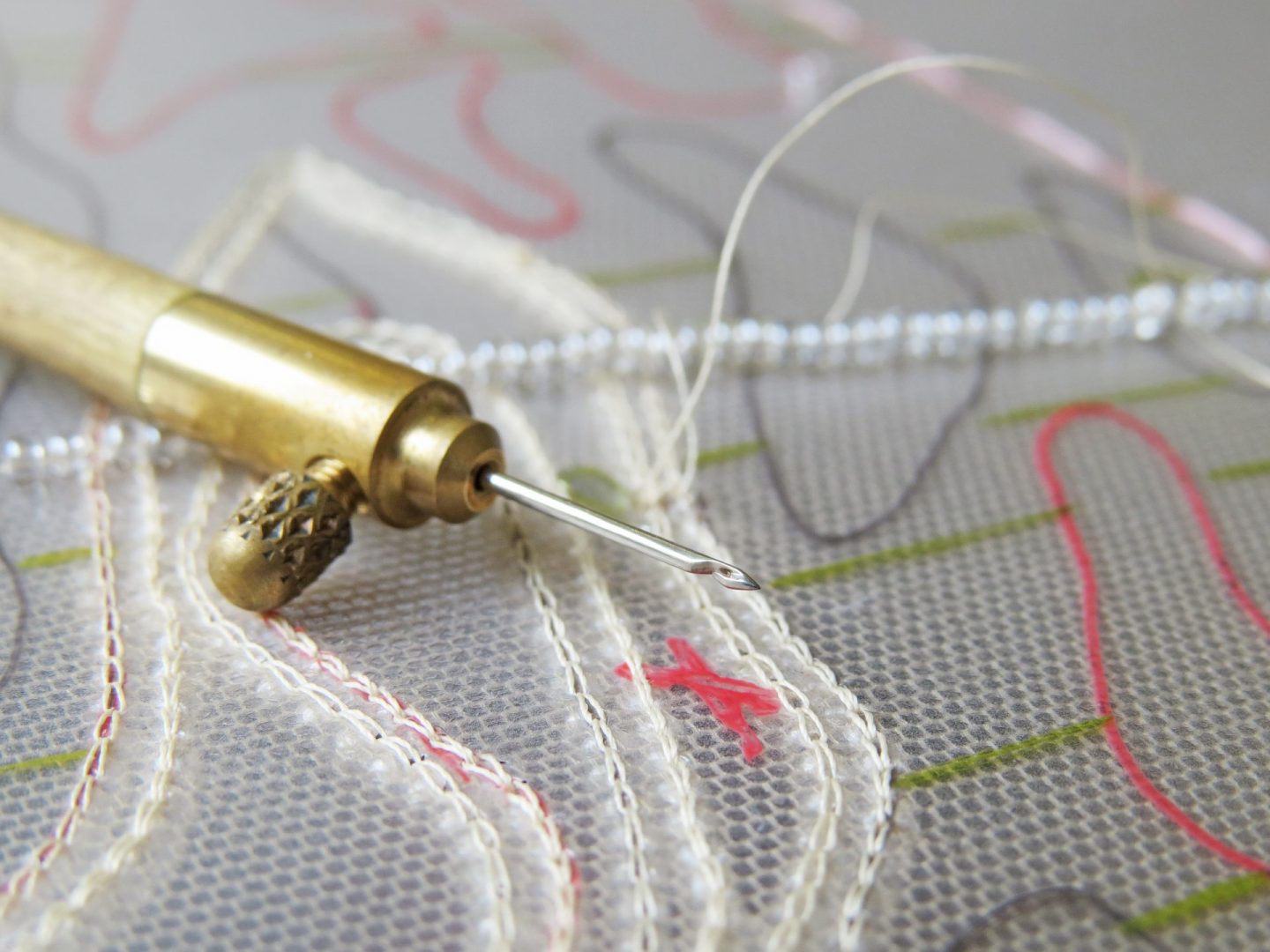

The chain stitch is a series of loops that is connected by stitches forming a chain like effect. It is also the stitch that is created when doing Tambour embroidery.
Meaning fuzzy or caterpillar in French, Chenille comes in silk threads which can be used in embroidery to create a fluffy effect.
In embroidery, couching and ‘laid work’ are techniques in which yarn or other materials are laid across the surface of the ground fabric and fastened in place with small stitches of the same or a different yarn. This is often used in goldwork where ‘passing’ is couched down. The couching threads may be either the same colour as the laid threads or a contrasting colour. When couching threads contrast with laid threads, patterns may be worked in the couching stitches.
The French word for ‘shading’ in embroidery it describes the effect when a dense colour or pattern graduates away to nothing over the length of a material. A sleeve with a dégradé effect may be densely beaded at the shoulder before gradually becoming less beaded at the cuff.
Worked along two parallel lines, the Knotted Diamond stitch creates a cross stitch effect with knots in all intersections. This stitch can also connect two different fabrics together as it is worked along two different lines.
From the French word meaning ‘Little Shoulder’. An Epaulette is an ornamental shoulder decoration used as insignia of rank by armed forces and other organisations. In several European armies epaulettes are also worn by all ranks of elite or ceremonial units when on parade.
A Frog or Chinese Frog is an ornamental braiding for fastening the front of a garment that consists of a button and a loop through which it passes. Frogs are usually meant to be a design detail. Where many frogs are repeated beyond practical needs, this purely decorative form is termed ‘frogging’.
The fly stitch is sewn on with three points which creates a ‘V’ or a ‘Y’ shape depending on the length of the holding stitch.
In embroidery term Gilt refers to the the bullion thread used to embroider Goldwork. ‘Gold bullion’ is 2% Gold whereas Gilt is plated in Gold. Gilt is considered the more affordable option.
Using metal threads, Goldwork embroidery is often used in military and ceremonial garments. It is a technique prized for the material’s ability to catch and reflect light.
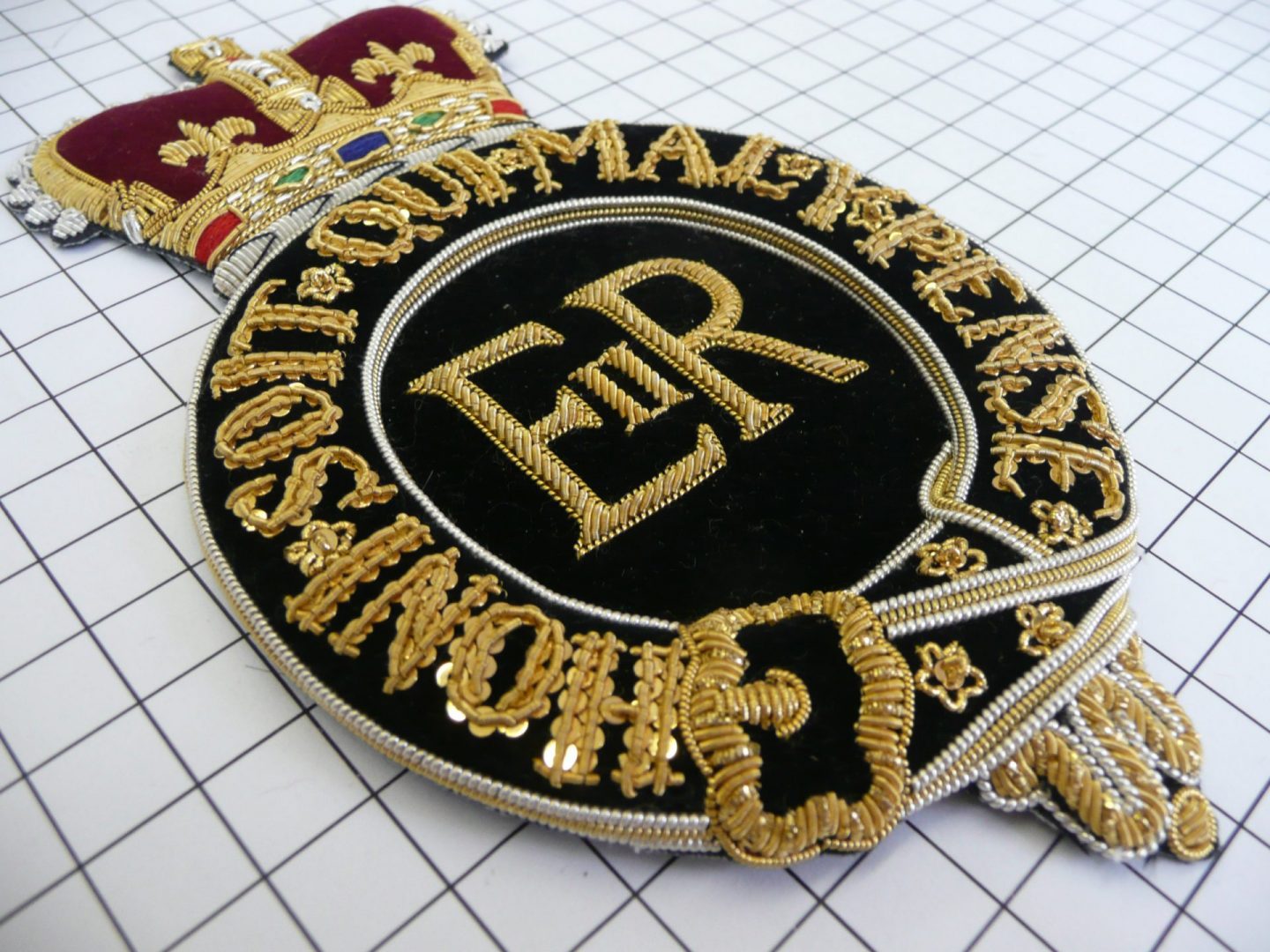
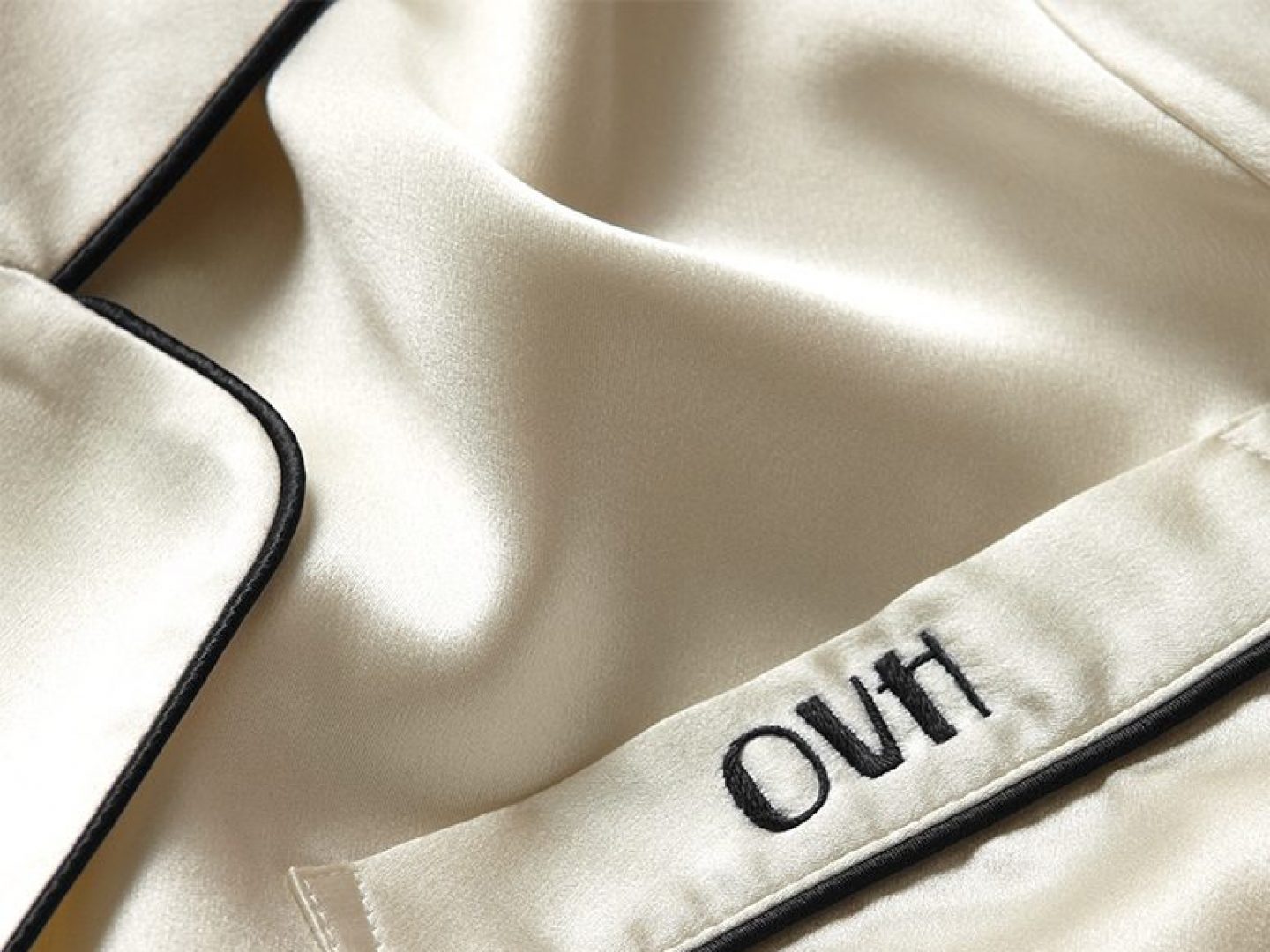
Hardanger is an ancient Persian form of embroidery traditionally worked with white thread on white even-weave cloth, using counted thread and drawn thread work techniques. It is sometimes called whitework embroidery.
Used as a decorative stitch or a finishing for hemming, the Herringbone stitch works across two parallel lines connecting them together.
A dyeing technique used to pattern textiles that employs a resist dyeing process similar to tie-dye on either the warp or weft fibres prior to weaving. The word ikat derives from the Indonesian word meaning ‘to tie’
With straight stitches used as a base, another thread is run under the straight stitches to create an interlaced effect. It can be used on single, double or triple lines of straight stitches to connect them together without doing through the fabric.
A form of crewel embroidery used for furnishing characterised by fanciful plant and animal shapes worked in a variety of stitches with two-ply wool yarn on linen. Popular motifs in Jacobean embroidery, especially curtains for bed hangings, are the Tree of Life and stylised forests, usually rendered as exotic plants arising from a landscape with birds, stags, squirrels, and other familiar animals.
A knotted stitch is any embroidery technique in which the yarn, bullion or thread is knotted around itself.
Lunéville or Crochet de Lunéville is a French term for drum and tambour work. The embroidery done with a hook working through a fabric stretched tight as a drum. A tambour hook makes one stitch, the chain stitch. The hook is held on top of the frame with the threaded beads or sequins underneath.
Typically, a motif of two or more interwoven letters, such as a person’s initials, used to personalise a possession or garment.
The Moorish stitch is a series of diagonal stitches with a pattern that runs along the design. With smaller stitches filling up spaces in between, it can be used to fill up larger areas with embroidery.
Different embroidery needles do different jobs. There are several commonly used embroidery needles. Embroidery (or ‘crewel’) needles have sharp points and slightly elongated eyes. They’re used for crewel work and most surface embroidery where piercing through the fabric threads is necessary to the stitching. Tapestry needles have long eyes and blunt points. They’re used for counted work, drawn thread work, canvas work, or other types of needlework in which the point of the needle is not meant to pierce the fabric threads. Chenille needles have a long eye like the eye on tapestry needles, but a sharp point, and can be used effectively in crewel work and other wool embroidery, or any surface work where a longer eye and a sharp point is desired. Straw or milliner needles have an eye and shaft that are equal in thickness, which makes them ideal for French knots and bullion knots, or any stitch where the needle must pass through multiple wraps of thread.
Or Nue (or shaded gold) is a form of goldwork embroidery using couching where different coloured silk threads are stitched over the metallic base of gold threads to form patterns or designs, often figures or narrative scenes.
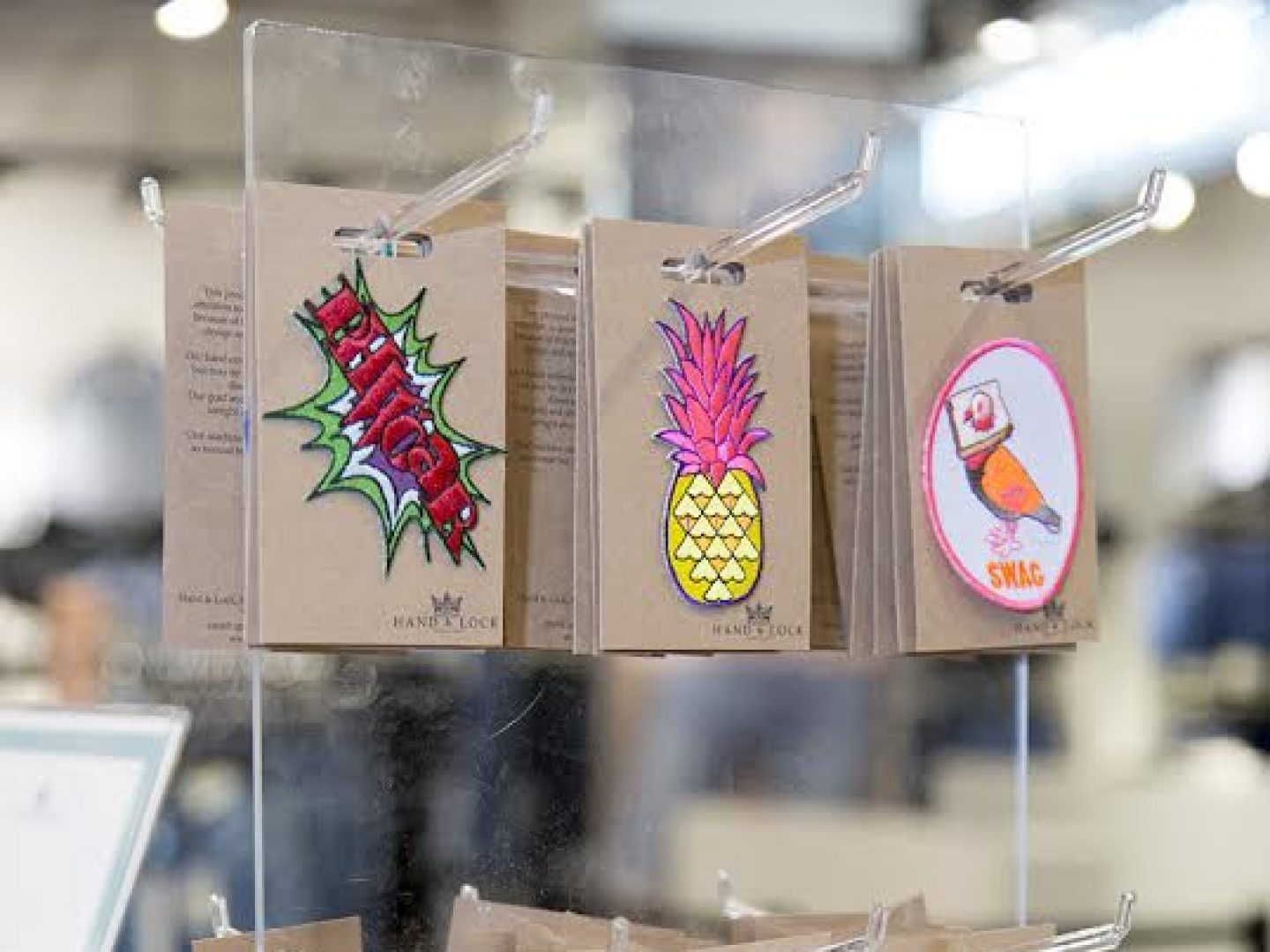
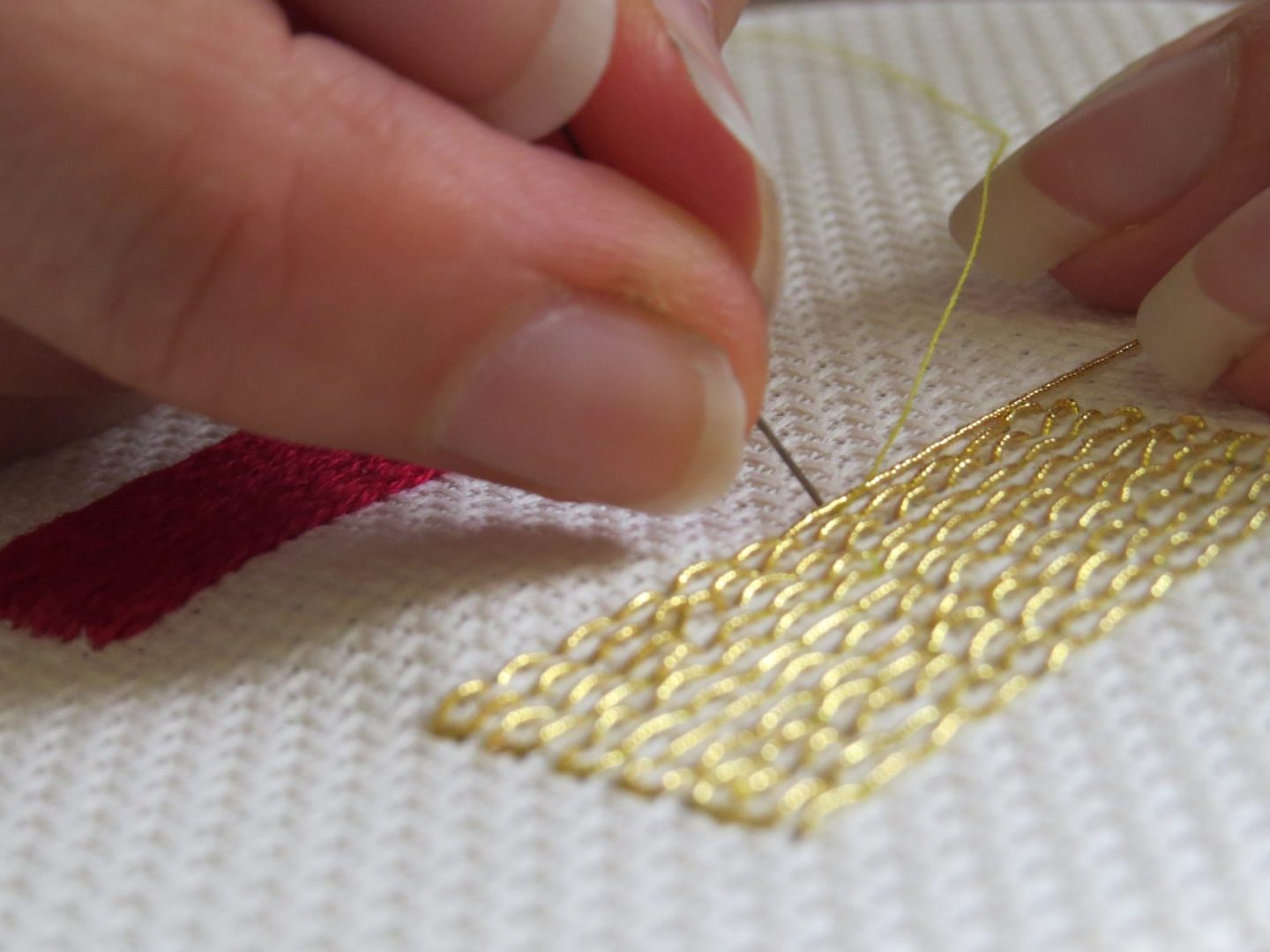
A method for transferring designs onto fabrics. A fine powder (Pounce), made from ground charcoal, chalk dust or powdered crayfish shell is dusted over a stencil to transfer a design to an underlying surface.
Patches are ready made embroidery designs with an iron on back allowing consumers to attach them to any garment they wish to.
The word ‘quilt’ comes from the Latin culcita meaning a stuffed sack. Quilting is the process of sewing of two or more layers of material together to make a thicker padded material.
This stitch consists of four straight stitches that starts and ends on the same point. A straight stitch is the horizontally stitches in the middle forming an orb like shape. It can be used to cover entire fabrics with embroidery.
Rough Purls are very fine wire threads in a tubular shape with a smooth surface and has a matte appearance (in contrast to the smooth purl which has a shiny appearance).The thread typically comes in two or three lengths to make up one yard. All of the purl threads are a hollow soft and flexible metal tube. The tube is cut up into pieces and sewn down like a bead.
A basic straight stitch with even stitches. Just like its name, the thread runs through in and out of the fabric.
Similar to a straight stitch, it is a series of small stitches but with shorter stitches on the top of the fabric compared to the bottom. It is also known as the seed stitch.
With rows of straight stitches as a base, chain stitches are used to create a raised effect. Just like its name, the final result looks like a row of braids.
Small, thin, often circular piece of glittering metal or other material, used especially for decorating garments.
Originating from the province of Suzhou in China, these works of art are made from fine silk thread on silk fabrics. They split high quality silk thread into thinner strands which allows them to produce more details and depth to their work.
A common stitch used in embroidery for covering larger areas, the satin stitch is a simple straight stitch that is sewn closely together and can be shaped into any space that needs to be filled.
A stem stitch is similar to a Back stitch. However the thread is put under the middle of the previous stitch connecting the stitches together.
See Lunéville.
A type of fabric which has a distinct pattern of parallel ribbing usually made of cotton or polyester. Because of the structure of the ribbing, it is a durable fabric.
Confusingly sometimes called Frogging in the US. Unpicking is removing threads when a mistake is made or when you are de-constructing an outfit.
A layer of underlay stitches are used to stabilise an area of embroidery before the actual stitches are sewn onto it. It prevents fabric from pulling the fabric when stitching.
A popular technique in ‘Opus Anglicanum’, underside couching is a technique where a thread is placed on the surface of the material while a second thread is brought up from the backside of the material and then used to encircle the laid thread. The tying thread is returned through the same hole and pulled with a gentle ‘pop’ to create a hinge.
A chain stitch design accomplished by tambour or Cornelli Machine usually described colloquially as a ‘squiggly’ line. The technique is named vermicelli after the pasta because of its appearance. It is also sometimes referred to as ‘cornelli couching’.
It is a special stitch used to create a fuzzy ‘velvet’ effect by keeping the stitches loose while securing down each loop. After an area is filled, the loops can be cut to create the fur like fuzzy effect.
See Hardanger.
Two straight stitches are met in the middle creating a ‘V’ and a loop stitch is used to connect to it. A series of these stitches will create a result that portrays a sheaf of wheat.
Five straight stitches are met in the middle and is used to create a base for this stitch. Then another thread is used to wrap around these straight stitches in different lengths. The spiral shape in the end looks like a flower and often used in embroideries portraying nature.
A type of Pearl Purl used in Gold work. Pearl Purl is available in three different sizes – very fine, Extra and Super. Extra would be ideal to use in a larger area off work, whereas very fine is suitable for smaller areas.
A spiral arrangement of the fibres around the axis of the yarn. The twist binds the fibres together and also contributes to the strength of the yarn.
A back-and-forth stitch used where a straight stitch isn’t suitable, such as in reinforcing buttonholes, in stitching stretchable fabrics, or when temporarily joining two work pieces edge-to-edge.
